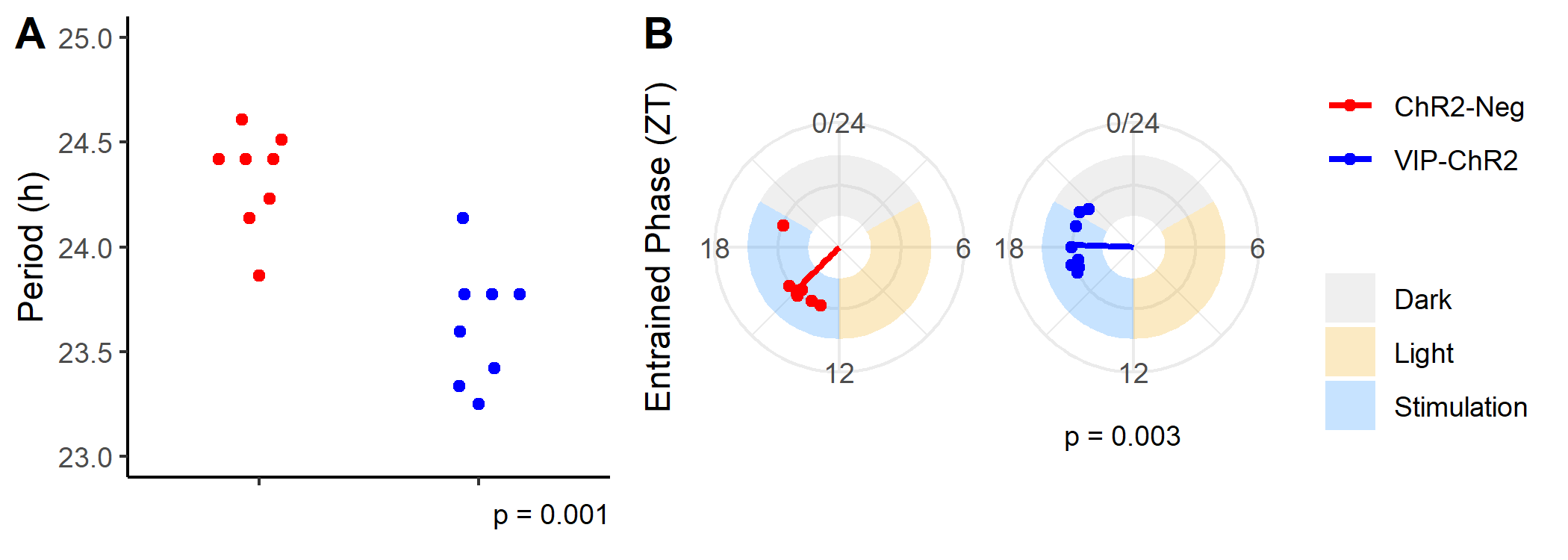Abstract
Circadian clocks play key roles in how organisms respond to and even anticipate seasonal change in day length, or photoperiod. In mammals, photoperiod is encoded by the central circadian pacemaker in the brain, the suprachiasmatic nucleus (SCN). The subpopulation of SCN neurons that secrete the neuropeptide VIP mediates the transmission of light information within the SCN neural network, suggesting a role for these neurons in circadian plasticity in response to light information that has yet to be directly tested. Here, we used in vivo optogenetic stimulation of VIPergic SCN neurons followed by ex vivo PERIOD 2::LUCIFERASE (PER2::LUC) bioluminescent imaging to test whether activation of this SCN neuron sub-population can induce SCN network changes that are hallmarks of photoperiodic encoding. We found that optogenetic stimulation designed to mimic a long photoperiod indeed altered subsequent SCN entrained phase, increased the phase dispersal of PER2 rhythms within the SCN network, and shortened SCN free-running period - similar to the effects of a true extension of photoperiod. Optogenetic stimulation also induced analogous changes on related aspects of locomotor behavior in vivo. Thus, selective activation of VIPergic SCN neurons induces photoperiodic network plasticity in the SCN which underpins photoperiodic entrainment of behavior.
Where applicable, full text and supplement provided for fair use.